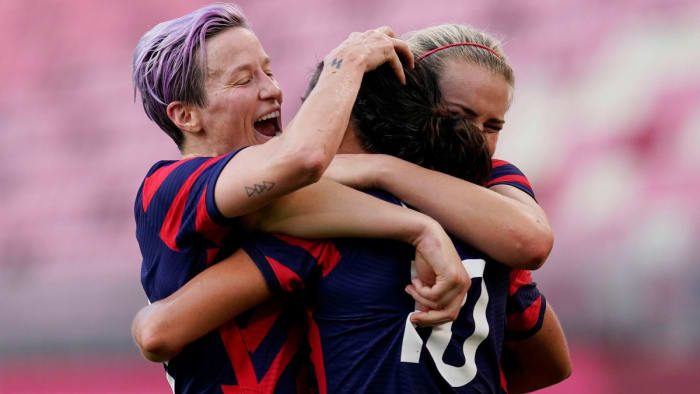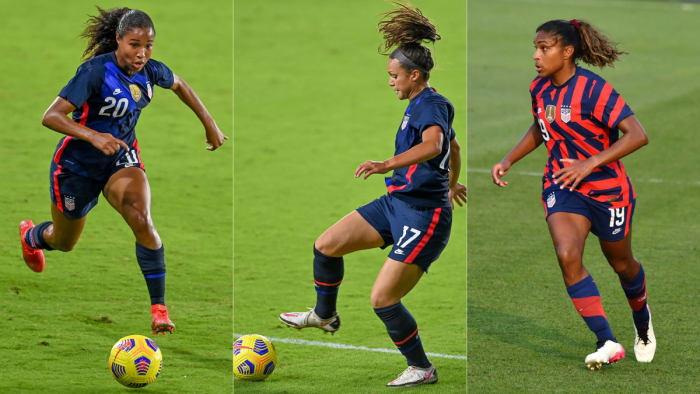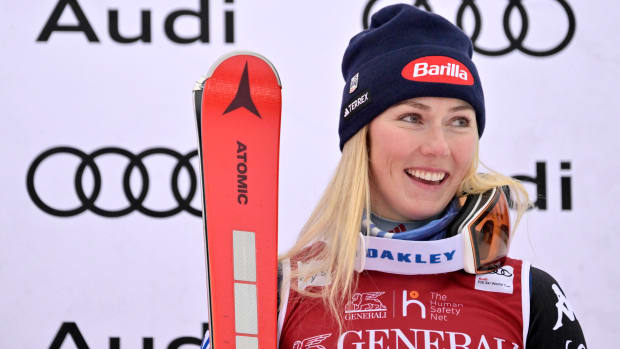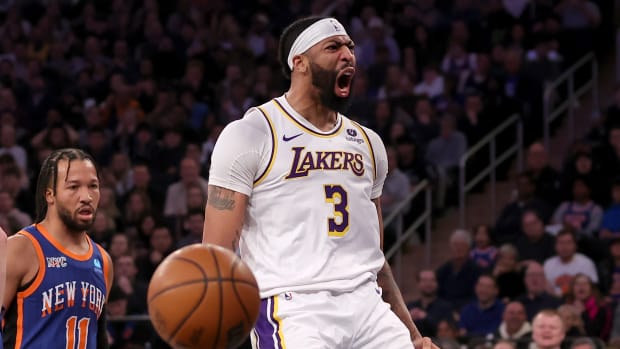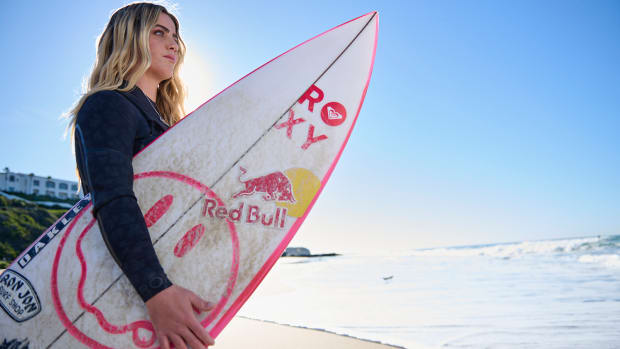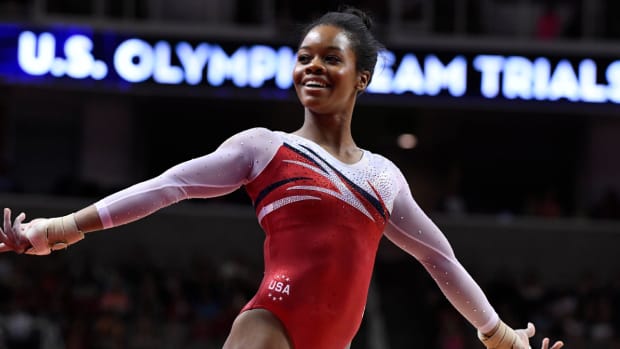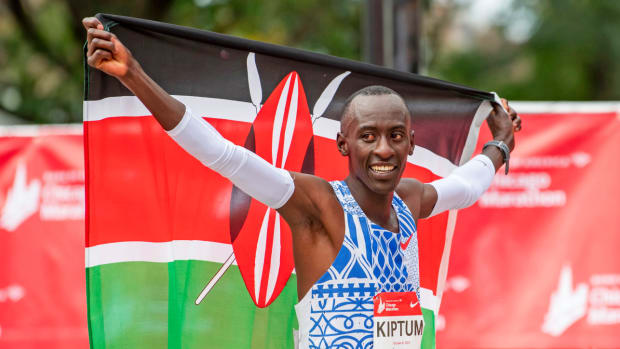Olympic Bronze, Rediscovered Joy and a Look Ahead for the USWNT
If this is indeed the end of an era, or at least the end for a few decorated U.S. women's national team stars, it at least concludes with a medal and some style points.
The U.S. captured Olympic bronze for the first time on Thursday, rediscovering the joy that Megan Rapinoe and others suggested had been lost following a semifinal defeat to Canada. A 4–3 win over Australia in Kashima, where the dreams of gold were shattered just days ago (and where the U.S. and Australia had played to a drab 0–0 draw days prior to that to close group play), secured a third-place finish and saved some face to conclude what was ultimately a disappointing trip to Japan.
Third-place games have a tendency of going haywire, with the stakes not entirely their highest and teams allowed to play freely due to a lack of repercussion. That's not to downplay the meaning of an Olympic bronze medal—especially to Australia, which has still never medaled in women's soccer—but there's a different vibe and a different kind of pressure that encompasses these types of games, and that stayed true here. For the second time in her career, Rapinoe scored on an Olimpico (directly from a corner kick) at the Olympics. The first came in her first Games, in the 2012 semifinals vs. Canada, so this offered a bookend of sorts for what is expected to be her last go-around on this stage.
What also appeared to be a symbolic and appropriate ending was enjoyed by Carli Lloyd, who matched Rapinoe with a pair of goals on what should be her last go-around as well. Lloyd has been sure to check anybody who prematurely calls it a career for her before she can, but at 39, she was the USWNT's oldest Olympian ever and would be hitting Formiga territory should she continue. Nevertheless, Thursday was a momentous one for her. She earned her 312th cap, taking sole possession of second place on international soccer's all-time list (U.S. legend Kristine Lilly tops the list at an astounding 354), and her two goals made her both the first USWNT player to score at four Olympics and the U.S.'s all-time leading Olympic scorer with 10 goals.
“The way you saw us come out and play, that was the U.S. mentality," Lloyd said following the match, while also conceding that she is "at the tail end" of her career.
The bronze medal for the USWNT follows four golds, a silver and a quarterfinal elimination in Olympic play, and it at least allows the U.S. to go home with something for its troubles. It's not the gold its players demand of themselves, but there must have been a relief of sorts to regain the swagger and carefree and aggressive approach that has defined the modern era for this team.
After the semifinal defeat to Canada, though, the tone surrounding the team had shifted, and there's no denying that some semblance of change is on the way. That had to be expected given the makeup of this 22-player roster. When it was still at the original 18 players, Vlatko Andonovski's side averaged over 30 years of age. When the IOC expanded squads to allow alternates to be part of the picture, that ticked it down to just slightly under 30. But the U.S. was still dependent on Rapinoe and Lloyd, who are a combined 75, and captained by 36-year-old center back Becky Sauerbrunn. That's not to say a bittersweet bronze is solely down to their performances—in fact, it isn't, at all; the U.S. never found a rhythm as a whole, and some other individuals were just extraordinarily subpar by their standards. Overall, this was just a poorly executed and managed tournament—but time and legends move on.
So what comes next? Is this truly the end of an era, or just a slight transition to a semi-new one? After a medal-less trip to Brazil in 2016, coach Jill Ellis valued continuity, taking 15 of her 18 players to France for the 2019 Women's World Cup, which the U.S. won. Andonovski is a different manager with different methodology, but those expecting wholesale change will likely be disappointed. The USWNT is a team that's been run on seniority for decades, and its core is still made up of stars in their prime. It says something when Tobin Heath and Rose Lavelle are being brought off the bench in a medal match. The amount of depth hasn't changed, and a few players who age out don't make this a squad suddenly barren of title-winning talent. But that doesn't mean an eager next generation isn't ready to get a run-out.
The post-Olympic tour that takes place in the U.S. after the team returns home will likely feature the same core that played in Japan. At some point, Rapinoe, Lloyd, Sauerbrunn and others will contemplate their international futures. Hang on to try to play two more years and at another World Cup? Or make way for others?
And there are others.
Catarina Macario, the 21-year-old rising star at Lyon who was given six minutes of playing time at these Olympics, will be looked upon to be an attacking spark for the next decade, but she won't be alone. There's Midge Purce, the versatile 25-year-old who somewhat surprisingly missed the 22-player cut for this competition and can do like Crystal Dunn and feature at fullback. Sophia Smith (20), Trinity Rodman (19), Ashley Sanchez (22) and Mal Pugh (23)—a 2016 Olympian at 18 and a 2019 World Cup winner who remains out to reclaim her national team status–are among the forwards and attacking standouts who will be expected to push for time. And don't forget about Lynn Williams, 28, who impressed in her first Olympic start against the Netherlands. Heath (33), Christen Press (32) and Alex Morgan (32) are also not quite done just yet.
The midfield quartet of Julie Ertz (29), Lindsey Horan (27), Sam Mewis (28) and Lavelle (26) should remain intact and star on the World Cup stage in two years, but Andi Sullivan (25) and Jaelin Howell (21) are waiting in the wings for their opportunity to contribute.
In the back, Alana Cook, the 24-year-old center back, should become more of a fixture and contend for time with Abby Dahlkemper (28) and Tierna Davidson (22), neither of who enjoyed a particularly good Olympics. Versatile Racing Louisville rookie and 2021 No. 1 overall NWSL draft pick Emily Fox, 23, is another prime candidate to become a national team fixture.
In goal, the 33-year-old Alyssa Naeher could remain the No. 1 through another World Cup, but the younger Jane Campbell (26 and on the Olympic roster, though she did not play) and Casey Murphy (25) could be among those pushing for time.
All of which is to say that the cupboard is not bare even if the change from what's worked so well over the last six years seems daunting and if winning at the highest level has to be learned by a select few. It's on Andonovski to mold the pieces back into a first-place finisher over the next two years—and more importantly, ensure that it doesn't take a third-place match to rediscover what's given the U.S. its true essence in its time as the world's preeminent powerhouse.
More Olympics Coverage:
